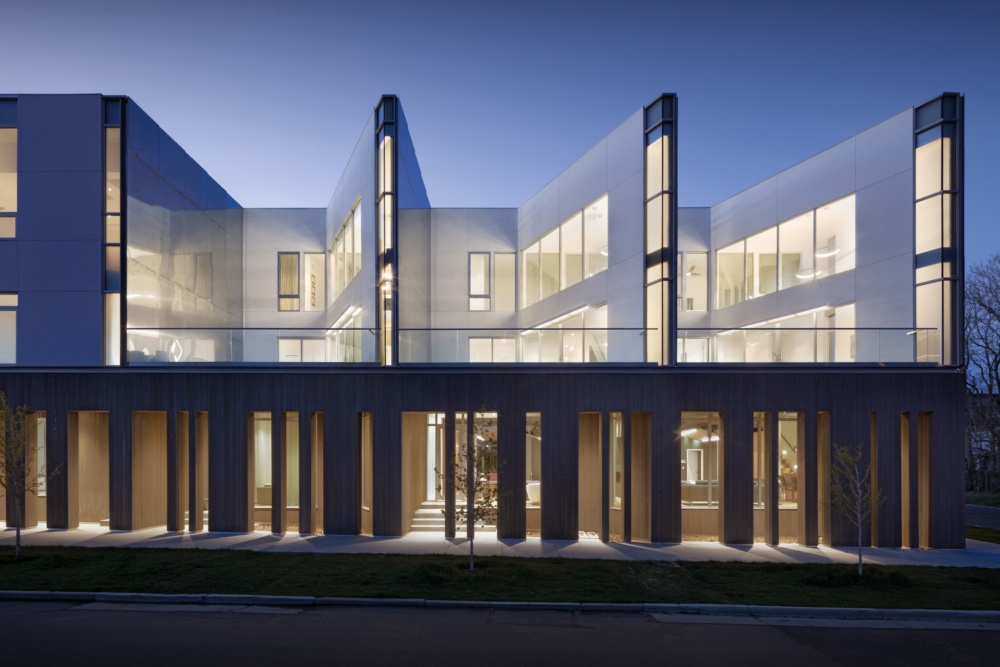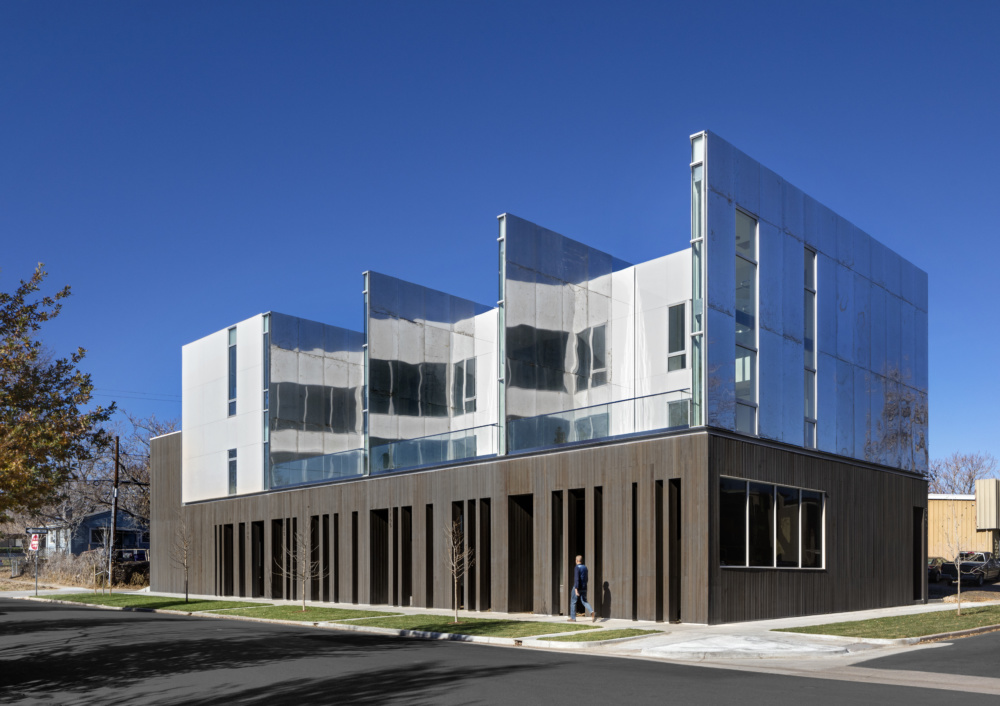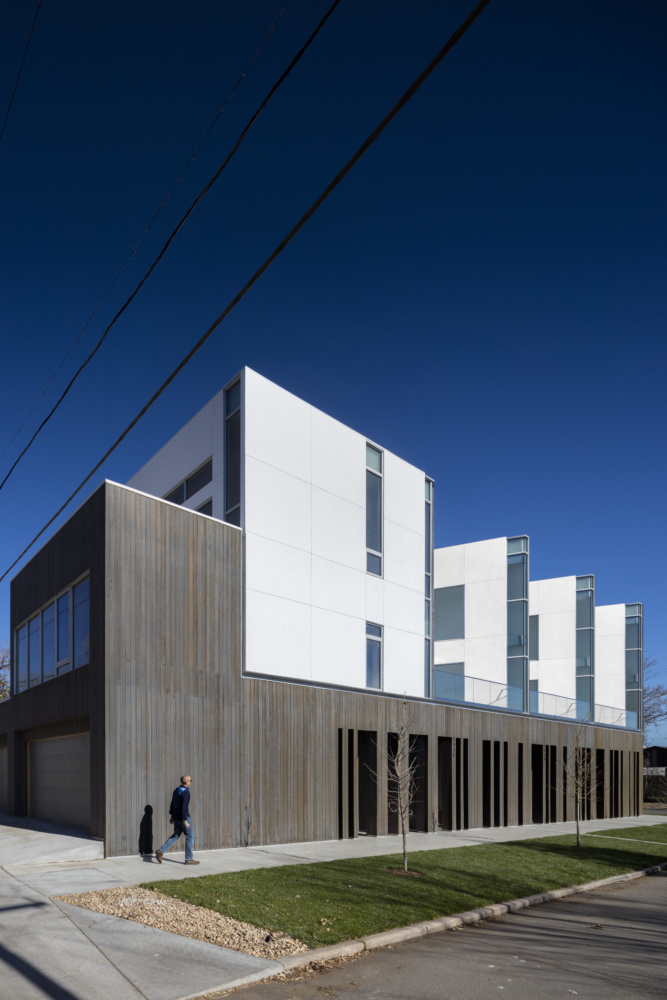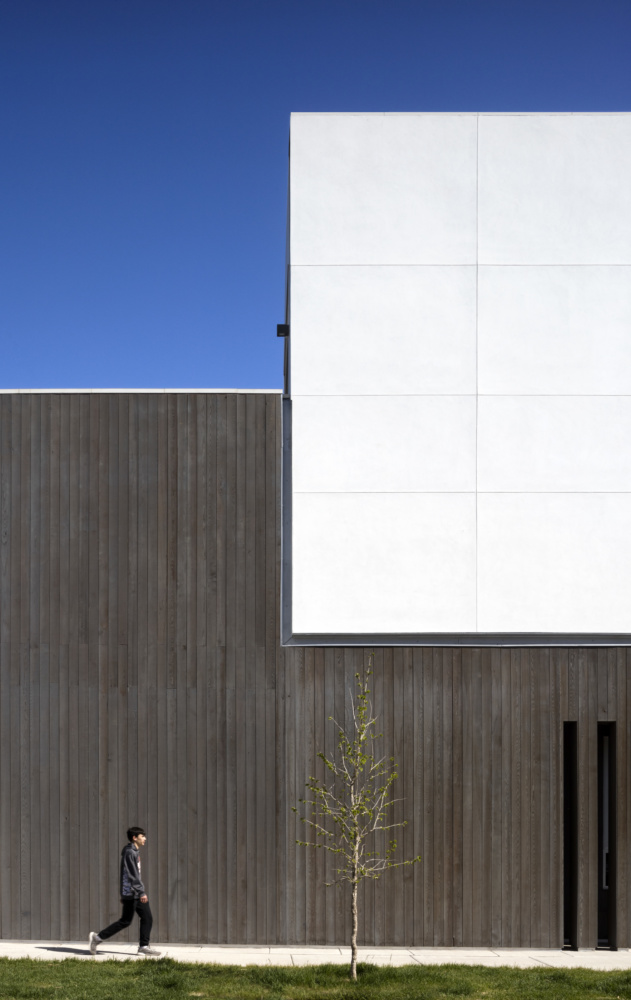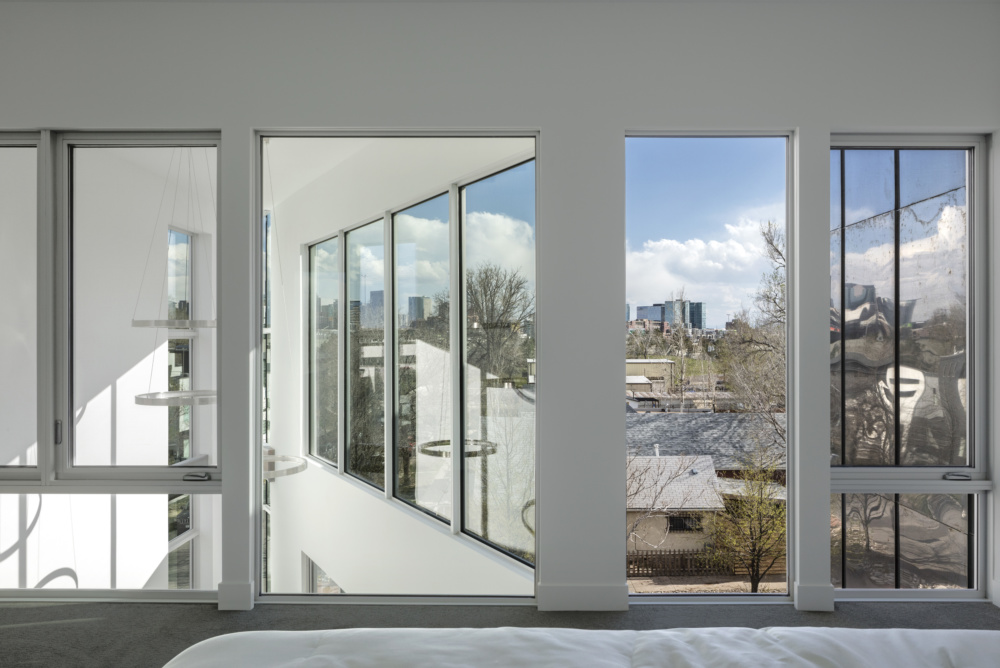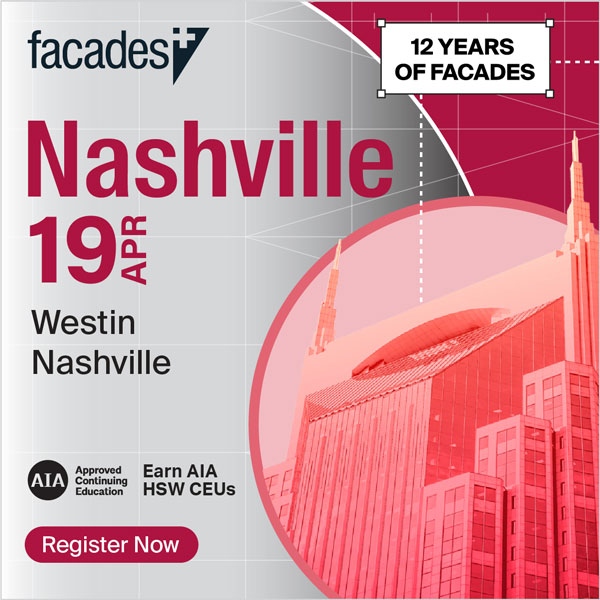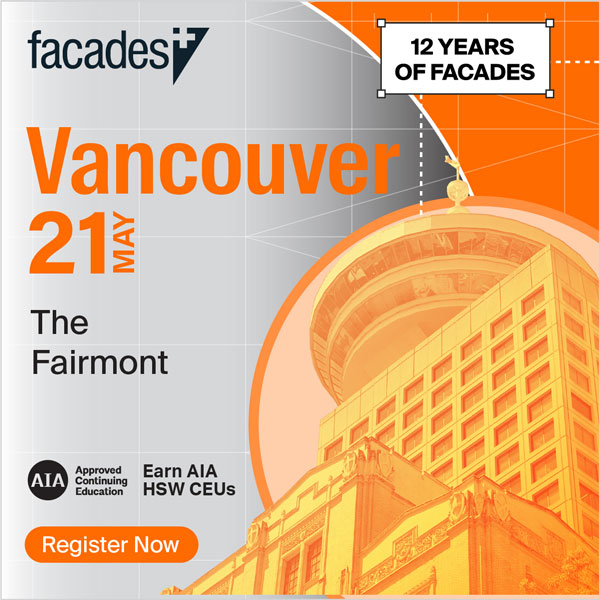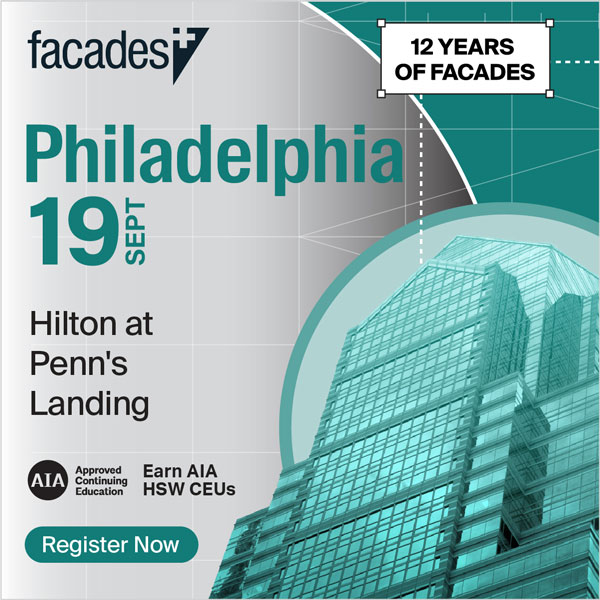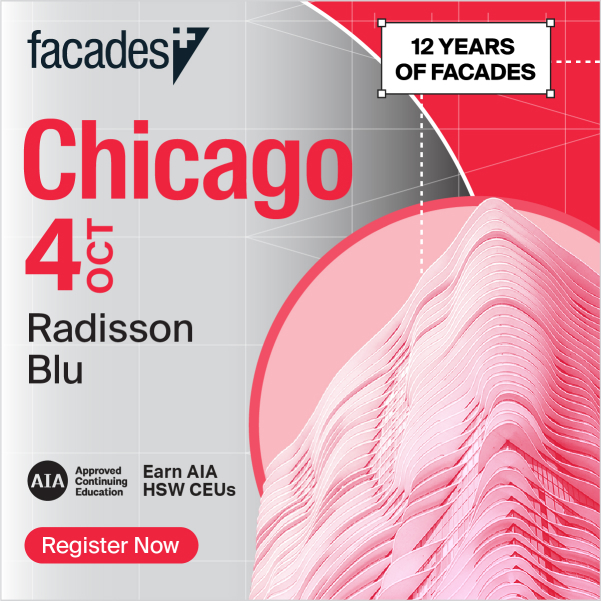Like many cities across the United States, Denver is undergoing tremendous demographic growth with the subsequent result of intense development and densification. Jason Street Multifamily, designed by local architectural-firm Meridian 105, is a four-unit residential project located in the Sunnyside neighborhood that responds to the region’s need for thoughtfully-designed and budget-restrained compact developments with a facade of salvaged stainless steel and cedar, and plaster.
The development rises to a height of the three stories and is defined by jagged extrusions that house two-story solariums. The size of the homes range from approximately 1700- to- 2400 square feet. Cedar siding, treated with pine tar, wraps across the ground floor of the building, which is punctured along the south elevation by an arhythmic entrance collonade. Above the ground floor, the material palette shifts to stainless steel and matte-finished plaster. The plaster is subject to two treatments; one with Carrara marble dust for smooth surfacing, and a lime-and-sand aggregate for rougher segments.
Although the steel will patinate and lose a degree of luster over time, the panels effectively mirror the plaster treatment within the concave surfaces of the extrusion, and shifts to a soft reflective glow during the evening.
Due to budget constraints, Meridian 105 turned towards creative methods to reduce costs. “The stainless steel panels were available salvage from a local metals shop so we purchased them and design[ed] them into the project,” said Merdian 105 founding principal Chad Mitchell. “The white Vero plaster was a product that we found at a conference in Las Vegas. We liked the smooth, glossy texture and thought it would be a good compliment to the metal surface.”
Salvaged raw materials form the basis of the project’s facade system, which relied on straightforward assembly. The steel sheets roughly measure 5-by-10-feet and were installed to overlap along the vertical seam to reduce the costs associating with cutting the panels. The sheets hang on stainless steel standoffs which are in turn secured via blocking into the wall, and backed by VaproShield weatherproofing as a rainscreen.

The use of glass is restrained and typically arranged in vertical and horizontal ribbons conforming to the internal function. However, according to Mitchell, “the glass towers that run on the edge of this feature were also difficult. We had to work with Western Aluminum to create a glass corner detail that worked with the custom angle.”
Meridian 105 Founding Principal Chad Mitchell will be joining the panel “Rocky Mountain Residential: Facade Design of Colorado Homes” at the Architect’s Newspaper’s upcoming Facades+ Denver conference on September 12.
